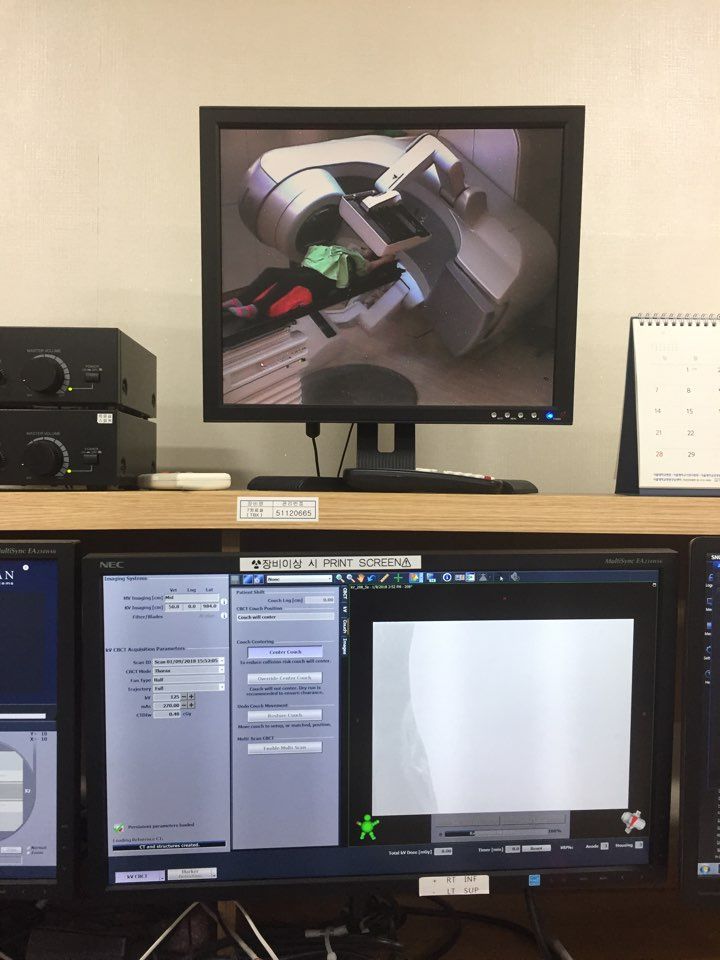[Cancer Story] Cut with an invisible sword and kill cancer - Radiosurgery (SABR)
Some of you have heard of the term radiosurgery, and some have never heard of it. It is a relatively recent concept that is not even familiar to doctors yet.
When I was the second year of resident, I remember that my hospital installed the radiosurgery device and started the treatment at Seoul National University Hospital. At that time, I though it was an incredibly trustworth and creative therapy, and I felt like it is a new reatment that would dry out the cancer as if surgically removing it without any pain or scarring. Radiosurgery was used in brain tumor, lung cancer, liver cancer and so on for the first time, but now we are trying to apply it to other cancers, and I am also conducting a clinical trial related to it.

1. What is Radiosurgery
It is also called as Sterotactic Ablative Radiotherapy (SABR). This term, SABR was abbreviated in Sabre (pictured below), a European cavalry sword.

The term 'stereotactic' implies a precise positioning for treatment, which is an important condition for radiosurgery. Radiosurgery is a technique that delivers a high dose of radiation exactly within the target to minimize the radiation dose to the surrouding normal tissue and get the desired radiobiological response. More than 10 times the radiation dose of conventional radiation therapy at once, so the biological effect is destructive like surgery, and it is called radiosurgery.
2. How has radiosurgery become possible?
Radiosurgery was first designed by a Swedish neurosurgeon and was intended to treat lesions in the brain with a single shot of radiation. The reason why it was used first to treat brain tumor was the rigidity of the skull. To irridiate a high dose of radiation, the position must remain unchanged and accurate. If the skull can be fixed, the location of brain will remain unchanged with the skull, as it is possible to deliver radiation to the desired location as planned. The machine was named as 'Gamma Knife'
With recent advances in technology, radiosurgery has become possible not only for brain lesions but also for other areas in body. This is because ① CT/MRI images can be taken before and/or dring treatment, ② high dose of radiation can be delivered quickly and accurately.

(Taking CT just before radiosurgery, Seoul National University Hospital)
3. What is different from conventional radiation therapy?
First, the frequency and duration of treatment are different. In case of conventional radiotherapy, radiation dose of about 2 Gy is delivered a day for about 4 to 6 months at about 30 times. The duration and the frequency of treatment vary from patient to pateint, but patients usually have to go to the hospital everyday for about a month.
On the other hand, in case of radiosurgery, the treatment is given only one to five times. The amount of radiation irraidated at one time is more than 10 Gy.
Second, tolerance of error is very small. It can be dangerous to deliver this large radiation dose at once to patient. Even a small change in location can cause serious complications by the radiation coming into the area where it should not be treated. Therefore, there must be a procedure to confirm that radiation is being investigated before treatment or during treatment.
4. In what cancer is it applicable?
Brain tumor
Brain tumor is the area where radiosurgery is being applied from earlist. It can be used in treatment for metastatic brain tuomrs, arteriovenous malformations schwannomas, meningiomas, and so on.
Lung cancer
Radiosurgery in lung cancer was first suggested by a Japanese institue in the 1990s and has become a standard treatment in patients with stage I lung cancer that is not operable. It might be possible in the near future to treat stage I lung cancer only with radiosurgery without thoracotomy instead of lobectomy. It is also applicable for acheving local control in patients with metastatic lung cancer.
(Reference: It has become possible to treat lung cancer without surgery.)
Liver cancer
Surgical resection is the most important treatment for liver cancer, but the problem is that more than 70% of the tumors are unable to be resected. These patients with unresectable diseases are treatead repeatedly with transareteral chemoembolization or systemic chemotherapy to extend survival and prevent cancer progression. Radiosurgery will provide one more option for patients who failed with prior treatments.
Metastatic spinal cancer
Treatment goals for metastatic spinal disease include pain relief, prevention of future compression fractures, and prevention of local progression. Previously, surgery or conventional radiotherapy have provided these benefits for patients, and it has become possible to achieve better outcome in terms of local control with short-term radiosurgery.
Etc
In addition, clinical trials using radiosurgery are undergoing with prostate cancer, pancreatic cancer, head and neck cancer, and so on.
5. What machines can be used for radiosurgery?
In recent years, the advance of technology has enabled the implementation of radiosurgeries in multiple treatment machines to various tumors.
Gamma Knife (Elekta Inc.), which is the oldest and most steadily used for brain tumor teratment, is a representative example. In addition, CyberKnife (Accuray Inc.), TreBeam (Varian Inc.), Tomotherapy, Viewray (MRI-cobalt), Novalis, and proton therapy can also provide radiosurgery. There are slight differences in each machines, but the big frame is the same. Since machines that can perform radiosurgery are usually expensive and relatively recent machines, they are often introduced in advertisement of hospitals. However, it is important to take in consideration whether it is possible to implement 'radiosurgery' in the hospital or not, rather than focusing on a specific machine.
The features and advantages and disadvantages of each treatment machine will be summarized separately.
Radiosurgery has brought another paradigm shift in cancer treatment. And the change is ongoing. It is expected that there will be a big change in cancer treatment guidelines according to the results of various large clinical studies in the future.
Reference
- Perez and Brady's Principles and Practice of Radiation Oncology, 6th Edition. Chapter 16-17.

Very well explained.
I hope new harmless treatments will be discovered soon. Looking at CT machines or brain surgery machines (only on pictures) always scares me and makes me feel very uncomfortable.
Thank you. Yes I agree and look forward to more developed uninvasive treatments !!
ㅎㅎㅎ... 한글로 읽고 여기에 보팅했네요.. ㅋㅋ
잘 읽어주셔서 감사합니다 ! ㅎㅎ